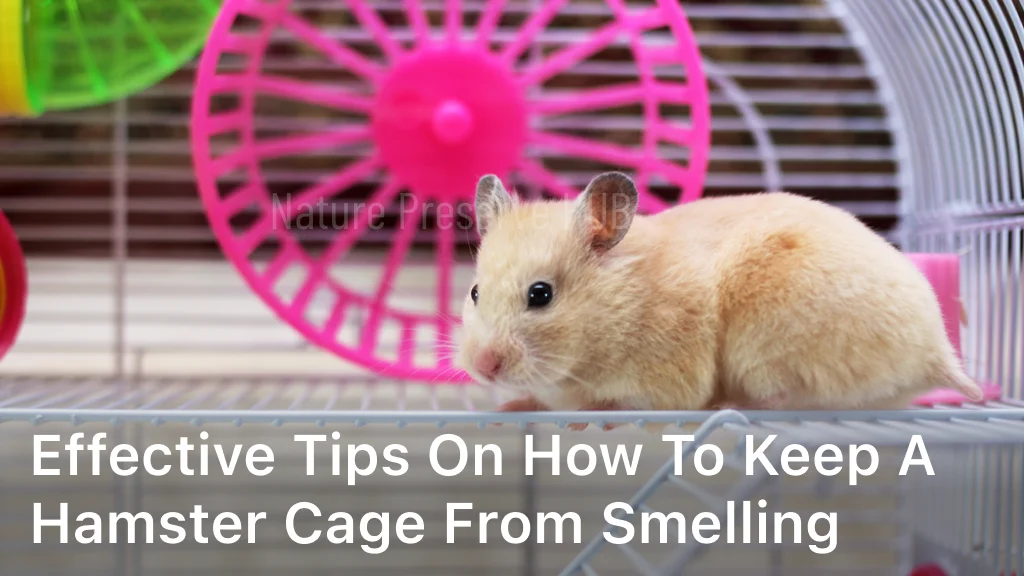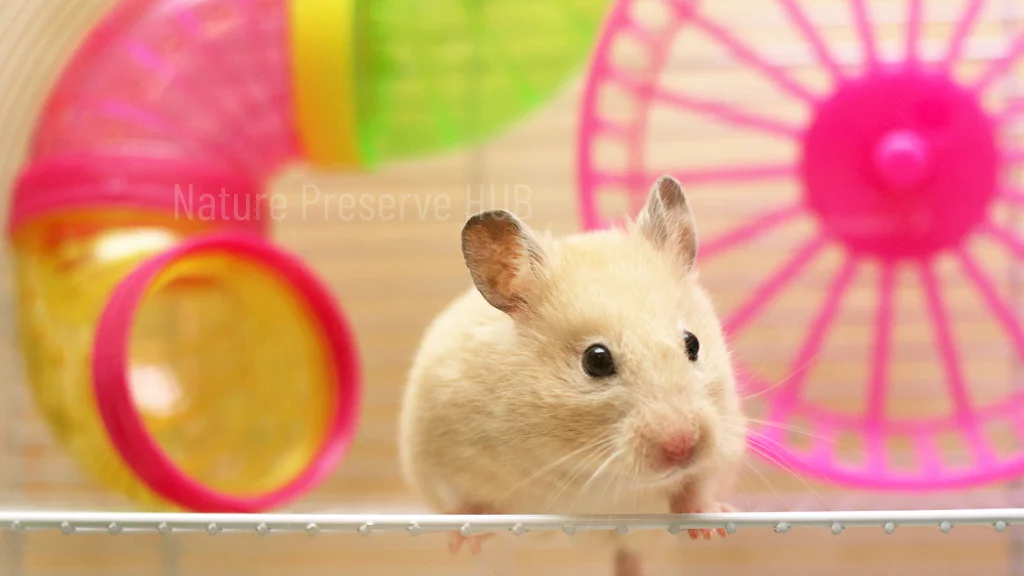Effective Tips on How to Keep a Hamster Cage from Smelling

naturepreservehub.com. Effective Tips on How to Keep a Hamster Cage from Smelling – Learn how to keep a hamster cage from smelling with our easy and effective methods, ensuring a fresh and healthy environment for your pet.
Hamsters are adorable pets that bring joy and companionship to our lives. However, the unpleasant odor emitted from their cage can be a major turn off.
A dirty hamster cage not only smells bad but can also lead to health problems for your pet. In this section, we will provide easy and effective tips on how to keep a hamster cage from smelling. Follow these tips to maintain a fresh and healthy environment for your beloved pet.
Key Takeaways:
- Regular cleaning of the cage is crucial to prevent odors from building up
- Use odor-absorbing bedding or wood shavings to keep the cage smelling fresh
- Proper ventilation is essential in reducing the smell from the hamster cage
- Choose a well-ventilated area to place the cage
- A clean and fresh cage will contribute to the overall well-being and happiness of your hamster

How to Keep a Hamster Cage from Smelling
Keeping a hamster cage clean is essential to prevent unpleasant odors. Here are some tips to help you maintain a fresh-smelling hamster cage:
Regular Cleaning Schedule
- Establish a routine for cleaning your hamster’s cage. Perform a thorough cleaning at least once a week.
- Spot clean daily by removing soiled bedding and uneaten food.
Bedding Choice
- Use high-quality, absorbent bedding materials, such as aspen shavings, paper-based bedding, or hemp bedding.
- Avoid cedar or pine bedding, as the natural oils in these woods can be harmful to hamsters and contribute to odors.
Proper Ventilation
- Ensure the cage has proper ventilation to allow air circulation. Stagnant air can contribute to odors.
- Avoid placing the cage in a humid or poorly ventilated room.
Use a Litter Box
- Train your hamster to use a designated corner of the cage as a bathroom area.
- Place a small litter box with hamster-safe bedding or litter in this corner.
Remove Wet or Soiled Bedding
- Check the cage daily for wet or soiled bedding, and promptly remove and replace it.
- Pay special attention to areas where your hamster tends to urinate.
Clean Accessories
- Wash and sanitize toys, hideouts, and other cage accessories regularly.
- Use hamster-safe cleaning products or a mixture of water and vinegar for cleaning.
Proper Food Handling
- Remove any uneaten fresh food promptly to prevent it from spoiling and causing odors.
- Use a food dish to minimize food spillage.
Hygienic Water Source
- Provide fresh water daily in a clean water bottle.
- Regularly clean the water bottle to prevent algae growth and bacterial buildup.
Air Fresheners
- Consider placing a small, hamster-safe air freshener near the cage.
- Avoid using strong or scented products, as hamsters are sensitive to odors.
Wash Cage Components
- Periodically disassemble the cage and clean all components, including bars, platforms, and ramps.
- Use a mild, hamster-safe disinfectant or a vinegar solution for cleaning.
Monitor Health
A healthy hamster is less likely to produce strong odors. Regularly monitor your hamster’s health and address any issues promptly.
Remember that each hamster is unique, and you may need to adjust these recommendations based on your hamster’s habits and preferences. Regular maintenance and a clean environment will go a long way in keeping your hamster and its cage smelling fresh.
Choose the Right Bedding Material
As we discussed earlier, selecting the right bedding material is critical in reducing the odor coming from your hamster cage. We recommend opting for bedding that is designed to absorb odors, such as odor-absorbing bedding or wood shavings for hamsters. These materials can help keep the cage smelling fresh for longer.
| Bedding Material | Pros | Cons |
|---|---|---|
| Odor-absorbing bedding | Reduces odor | Expensive |
| Wood shavings | Safe for hamsters to bury in | Less effective in odor control compared to other bedding materials |
As you can see in the table above, odor-absorbing bedding may be more effective in reducing odor, but it can also be more expensive. Wood shavings are a more affordable option and are safe for hamsters to dig and play in, but they may not be as effective in absorbing odor as odor-absorbing bedding. Ultimately, the decision depends on your personal preferences and budget.
Keep Reading : Can a Hamster Eat a Strawberry?
Regular Cleaning Schedule
Keeping your hamster cage clean and fresh is essential for the health and well-being of your pet. Establishing a regular cleaning schedule is an effective way to maintain a hygienic living environment and prevent unpleasant odors from building up.
We recommend the following tips for a proper hamster cage cleaning routine:
- Frequency: Aim to clean your hamster cage once a week, depending on the size of the cage and the number of hamsters you have. If your pet produces a lot of waste or you notice a strong smell, you may need to clean the cage more often.
- Remove Soiled Bedding: The first step in cleaning your hamster cage is to remove any soiled bedding or litter. This can be done using a small scoop or with gloved hands. Be sure to discard the waste in a sealed bag and dispose of it properly.
- Wipe Down Surfaces: Once you have removed the soiled bedding, use a damp cloth or paper towel to wipe down the surfaces of the cage. A mild soap or cleaning solution can also be used to disinfect the cage.
- Replace Bedding: After cleaning and disinfecting the cage, replace the old bedding with fresh, clean material. Choose a high-quality bedding material that is absorbent and helps control odors.
- Cage Maintenance: In addition to regular cleaning, it’s important to perform routine cage maintenance. This includes trimming your hamster’s nails, checking the water bottle or dish for cleanliness and functionality, and inspecting the cage for any signs of damage or wear.
By following these tips for a proper hamster cage cleaning schedule and maintenance routine, you can keep your pet’s living space clean and hygienic, eliminating any unpleasant odors and promoting their overall health and happiness.
Keep Reading : Fun Facts about Hamsters You Should Know
Proper Ventilation
When it comes to keeping your hamster cage smelling fresh, proper ventilation is essential. Without it, the cage can quickly become stuffy and emit unpleasant odors.
To ensure adequate ventilation, we recommend placing the cage in a well-ventilated area of your home. Avoid direct sunlight and damp areas, as these can contribute to odor build-up.
If you find that the cage is still not getting enough fresh air circulation, consider opening windows or using a small fan to improve cage air flow. This can go a long way in reducing any potential odors and creating a healthier environment for your hamster.
Conclusion: Keeping Your Hamster Cage Fresh and Odor-Free
Now that we have discussed various tips on how to keep a hamster cage from smelling, it’s essential to remember that maintaining a clean living environment for your pet is crucial. By following the tips we have mentioned, you can ensure that your hamster’s home is always fresh and odor-free.
Choose the Right Bedding Material
When it comes to choosing the right bedding material, it’s vital to opt for a material that is specifically designed to absorb odors. Odor-absorbing bedding or wood shavings can help keep the cage smelling fresh for longer periods.
Establish a Regular Cleaning Schedule
A regular cleaning schedule is crucial to prevent odors from building up in the hamster cage. Make sure to set a routine for cleaning the cage, including removing any soiled bedding and wiping down surfaces. Don’t forget to replace the bedding regularly.
Ensure Proper Ventilation
Adequate ventilation is essential in keeping your hamster cage smelling fresh. Ensure that the cage is placed in a well-ventilated area, away from direct sunlight or damp areas. Opening windows or using a small fan can also help improve air circulation, reducing any potential odors.
By implementing these easy and effective tips, you can maintain a fresh and odor-free living environment for your hamster. We hope our tips on how to keep a hamster cage from smelling will contribute to your pet’s overall well-being and happiness.
FAQ
How often should I clean my hamster cage?
It is recommended to clean your hamster cage at least once a week. This includes removing any soiled bedding, wiping down surfaces, and replacing the bedding.
What bedding material should I use to reduce odor?
To reduce odor, opt for bedding materials that are specifically designed to absorb odors, such as odor-absorbing bedding or wood shavings.
How can I improve ventilation in my hamster cage?
To improve ventilation, make sure the cage is placed in a well-ventilated area away from direct sunlight or damp areas. Opening windows or using a small fan can also help improve air circulation.
Can I use scented bedding in my hamster cage?
No, it is not recommended to use scented bedding in your hamster cage. Scented bedding can be harmful to your hamster’s respiratory system and may cause health issues.
Are there any alternative methods to reduce hamster cage odor?
Yes, you can try placing activated charcoal or baking soda in a small container inside the cage to help absorb odors. However, remember to regularly replace and dispose of these materials.
How long does it take for a hamster cage to start smelling?
The time it takes for a hamster cage to start smelling can vary depending on various factors such as the size of the cage, the number of hamsters, and the cleanliness of the cage. However, regular cleaning and proper maintenance can help prevent odors from building up.





